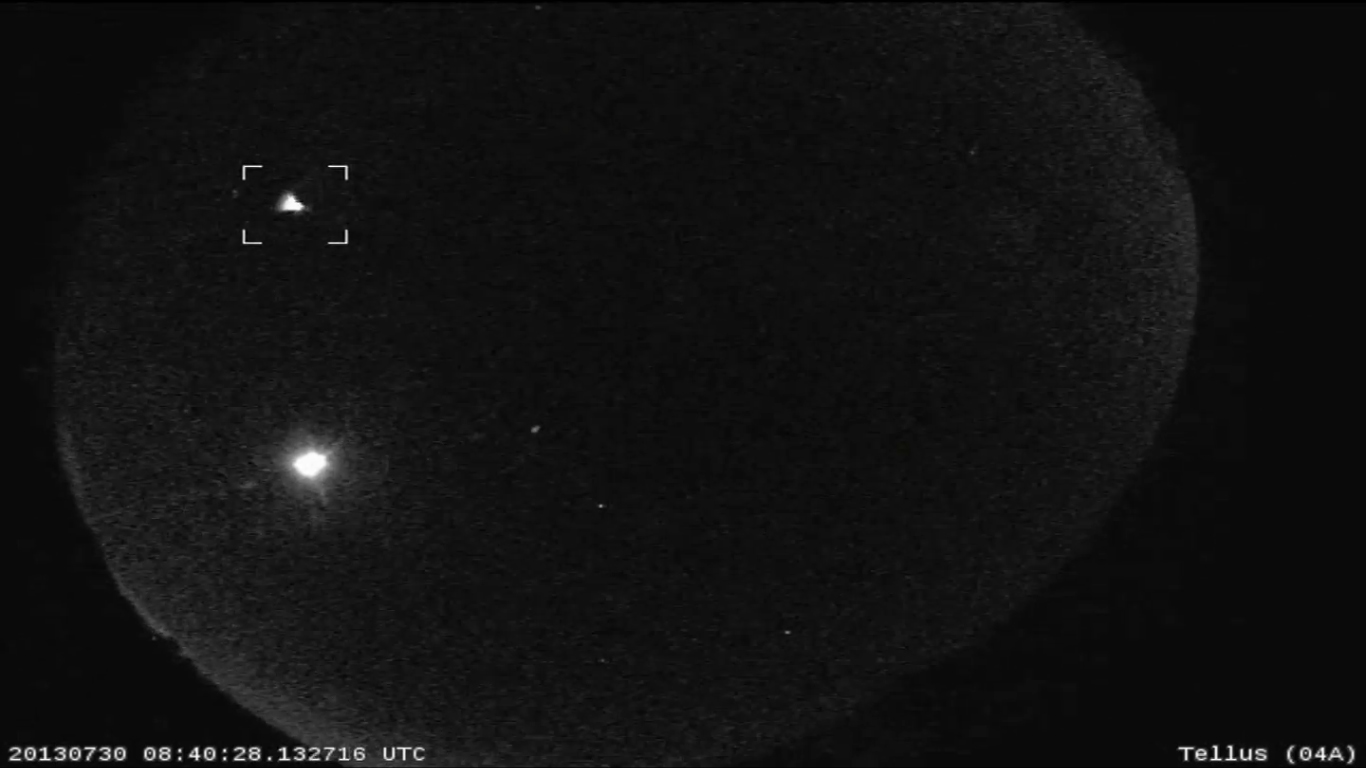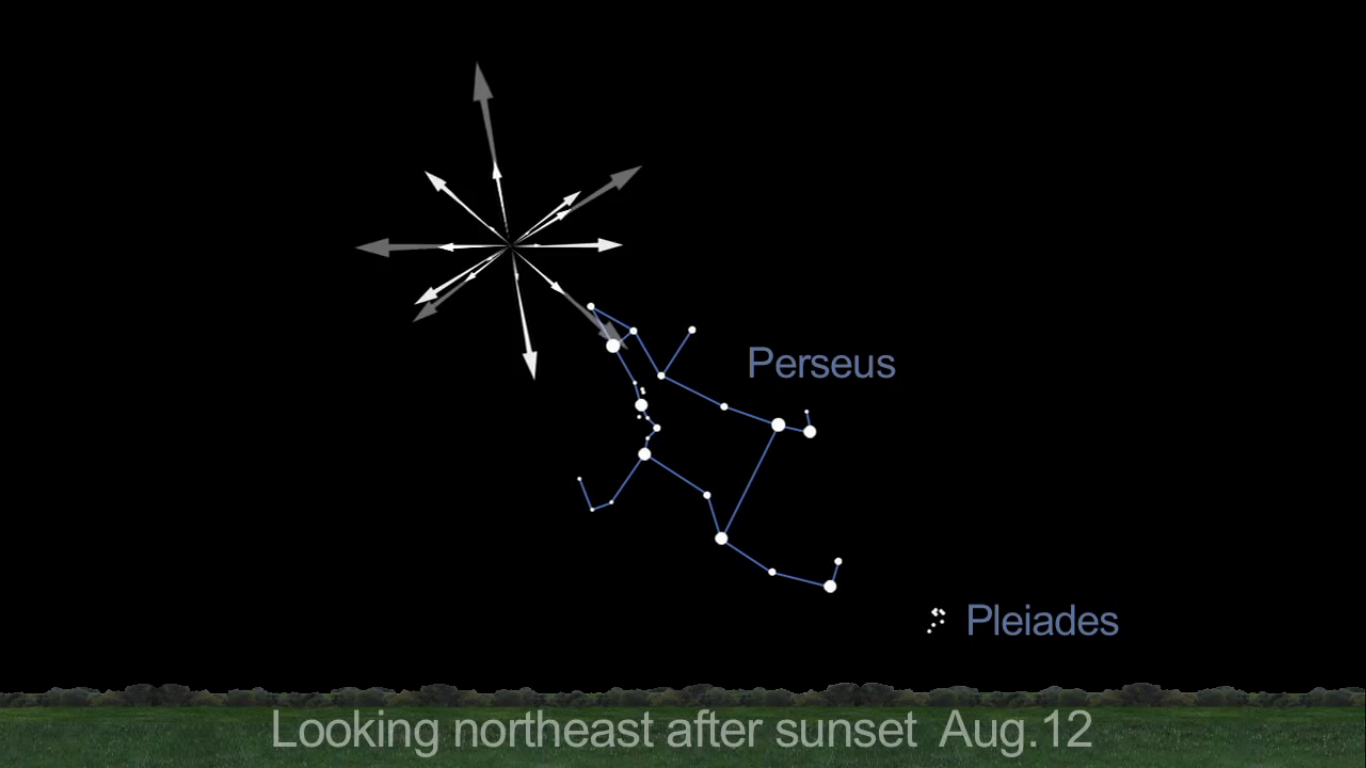Early Perseid Meteor Shower Fireballs Seen by NASA (Video)

The Perseid meteor shower is still days away from hitting its peak, but a NASA camera network has already captured video of fireballs from the annual night sky light show.
NASA's network of meteor-tracking cameras spotted the early meteor last week in a preview of what may come when the Perseid meteor shower peaks over the upcoming weekend.
"Here is a video of a bright Perseid seen by our all-sky camera located at PARI (NC) in the early morning hours of July 30," meteor expert William Cooke, head of NASA's Meteoroid Environment Office at the Marshall Space Flight Center in Huntsville, Ala., wrote in a video description on Aug. 1. "Several Perseids have already been detected and they are not set to peak for over a week!" [See more early photos of the 2013 Perseid Meteor Shower by stargazers]

The 2013 Perseid meteor shower will peak overnight between Aug. 11 and 12, and Aug. 12 and 13, Cooke wrote, adding that NASA's fireball network is already catching more Perseids as the time of peak activity nears.
The Perseid meteor shower occurs each year in mid-August when the Earth passes through a stream of dusty debris from the Comet Swift-Tuttle, which takes about 130 years to orbit the sun. The comet last passed through the inner solar system in December 1992.
Cooke has said that the Perseids may be such a dependable and prolific meteor shower because of the size of their source. Comet Swift-Tuttle has a huge nucleus just over 16 miles (26 kilometers) across, whereas the cores of most comets are only a few miles wide, he said.
The meteor shower is also known for spawning fireballs — which are extremely bright meteors — every few hours or so when observed under dark conditions.
Get the Space.com Newsletter
Breaking space news, the latest updates on rocket launches, skywatching events and more!
The Perseids get their name because they appear to radiate out of the constellation Perseus. However, staring straight at the constellation during the peak period is not the best way to observe the meteor shower, Cooke has said in the past. The best way is to be patient and stare straight up, and make sure you find a nice dark observing spot.
Other stargazing experts concur.
"If you'd like to try to watch this year's Perseids, get away from city lights. Look for state or city parks or other safe, dark sites," advised the editors of StarDate Magazine, a stargazing publication of the McDonald Observatory at the University of Texas at Austin. "Lie on a blanket or reclining chair to get a full-sky view. If you can see all of the stars in the Little Dipper, you have good dark-adapted vision."
Most importantly: Be patient and get comfortable. With clear, dark skies, stargazers could see up to 100 meteors an hour, NASA's Jane Houston Jones said in one of NASA's video previews of the 2013 Perseid meteor shower.

The best time to seek Perseid meteors will be in the wee hours of the morning, just after midnight, between Sunday, Aug. 11, and Tuesday, Aug. 13. Cooke advises observers to target their Perseids-hunting time for between Monday night at 10:30 p.m. local time and early Tuesday at 4:30 a.m. local time in order to maximize the chance of seeing meteors.
Editor's Note: If you snap an amazing picture of the 2013 Perseid meteor shower or any other night sky view that you'd like to share for a possible story or image gallery, send photos, comments and your name and location to managing editor Tariq Malik at spacephotos@space.com.
Email Tariq Malik at tmalik@space.com or follow him @tariqjmalik and Google+. Follow us @Spacedotcom, Facebook and Google+. Original article on SPACE.com.
Join our Space Forums to keep talking space on the latest missions, night sky and more! And if you have a news tip, correction or comment, let us know at: community@space.com.

Tariq is the Editor-in-Chief of Space.com and joined the team in 2001, first as an intern and staff writer, and later as an editor. He covers human spaceflight, exploration and space science, as well as skywatching and entertainment. He became Space.com's Managing Editor in 2009 and Editor-in-Chief in 2019. Before joining Space.com, Tariq was a staff reporter for The Los Angeles Times covering education and city beats in La Habra, Fullerton and Huntington Beach. In October 2022, Tariq received the Harry Kolcum Award for excellence in space reporting from the National Space Club Florida Committee. He is also an Eagle Scout (yes, he has the Space Exploration merit badge) and went to Space Camp four times as a kid and a fifth time as an adult. He has journalism degrees from the University of Southern California and New York University. You can find Tariq at Space.com and as the co-host to the This Week In Space podcast with space historian Rod Pyle on the TWiT network. To see his latest project, you can follow Tariq on Twitter @tariqjmalik.









